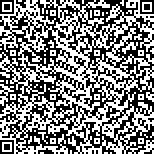| 摘要: |
| 以中国近海有代表性的陆架区——东海及南黄海为目标, 对东海和南黄海中常见的5 种挥发性卤代烃(VHCs)的分布及其海-气通量进行了研究。研究表明, 在黄海03断面表层海水中CHCl3、C2HCl3、C2Cl4、CHBrCl2和CHBr2Cl的浓度分别为41 (31—54)、53 (23—80)、17 (6.3—23)、23 (7.4—34)和51 (3.1—92) pmol/L, 东海表层海水中的浓度分别为25 (11—83)、54 (12—95)、39 (9.2—94)、25 (5.4—74)和6.4 (1.3—41) pmol/L。由于受人为活动、河流输入和黑潮水入侵的影响, VHCs 在水平分布上呈现近岸高、远海低的规律; 5种VHCs在表层海水中的浓度与叶绿素a(Chl a)存在相关性; 这5种化合物在表层海水中没有完全一致的周日变化规律, CHBrCl2和CHBr2Cl的最大值分别在上午10时和下午16时出现, CHCl3、C2HCl3和C2Cl4均在下午13时出现最大值。根据表层海水中CHCl3、C2HCl3和C2Cl4的浓度和文献报道的大气浓度, 运用Liss和Salter双层模型, 估算得到这3种物质在南黄海的海-气通量分别为76 (1.97—149)、160 (1.07—330)和53 (0.70—119) nmol/(m2·d), 在东海的海-气通量为46 (1.65—223)、171 (6.27—495)和135 (3.41—484) nmol/(m2·d), 东海和南黄海在冬季是大气CHCl3、C2HCl3和C2Cl4的源。 |
| 关键词: 挥发性卤代烃, 分布, 周日变化, 通量, 东海, 南黄海 |
| DOI:10.11693/hyhz201301002002 |
| 分类号: |
| 基金项目:国家自然科学基金项目, 40776039 号; 山东省自然科学重点基金项目, Z2005E01 号; 教育部“长江学者”奖励计划; 山东省“泰山学者”建设工程专项经费; 国家自然科学青年基金项目, 40606023 号 |
|
| DISTRIBUTIONS AND SEA-TO-AIR FLUXES OF SEVERAL VOLATILE HALOCARBONS (VHCs) IN THE SURFACE SEAWATER OF THE EAST CHINA SEA AND SOUTHERN YELLOW SEA |
|
SONG Gui-Sheng, YANG Gui-Peng, LU Xiao-Lan
|
|
Key Laboratory of Marine Chemistry Theory and Technology, Ministry of Education, College of Chemistry and Chemical Engineering, Ocean University of China
|
| Abstract: |
| The distributions of five kinds of VHCs in the East China Sea (ECS) and southern Yellow Sea (SYS) were systematically investigated in the present study. The results show that the concentrations of CHCl3, C2HCl3, C2Cl4, CHBrCl2 and CHBr2Cl in the surface seawater of SYS were 41(31—54), 53(23—80), 17(6.3—23), 23(7.4—34) and 51(3.1—92) pmol/L, and those in ECS were 25(11—83), 54(12—95), 39(9.2—94), 25(5.4—74) and 6.4(1.3—41) pmol/L, respectively. The concentrations of the five VHCs in the surface seawater were higher inshore than offshore, primarily due to anthropogenic influence, potamic input and Kuroshio water. The data presented in this study also show that the concentrations of VHCs were correlated with [Chl a] in the surface seawater in the study area. The result show that the diurnal variations of VHCs were not the same with each other, but the lowest concentrations of the 5 VHCs appeared at night and the highest concentration of CHBrCl2 and CHBr2Cl occurred at 10:00 and 16:00, respectively, while the highest concentrations of CHCl3, C2HCl3 and C2Cl4 were all present at 13:00. The higher concentrations of VHCs during daytime might be attributed to the light-induced increase in biological production. In addition, tide was found to have a significant impact on the observed diurnal variations of VHCs. On the basis of surface seawater concentrations of VHCs and gas exchange calculations, the mean sea-to-air fluxes of CHCl3, C2HCl3and C2Cl4 were estimated to be 76 (1.97—149), 160 (1.07—330) and 53 (0.70—119) nmol/(m2·d) in SYS, and 46 (1.65—223), 171 (6.27—495) and 135 (3.41—484) nmol/(m2·d) in ECS, respectively. Based on the present observations, we concluded that the study area appeared to be a source of atmospheric CHCl3, C2HCl3 and C2Cl4 in winter. |
| Key words: Volatile halocarbons, Distribution, Diurnal variation, Flux, East China Sea, Southern Yellow Sea |
